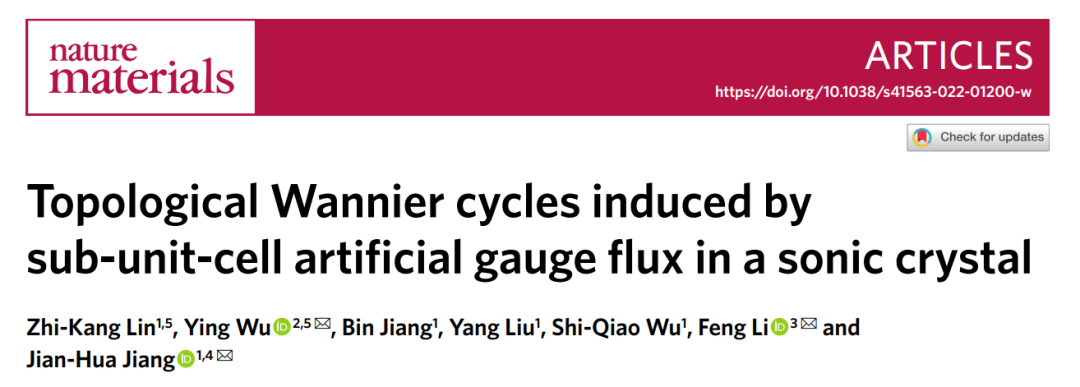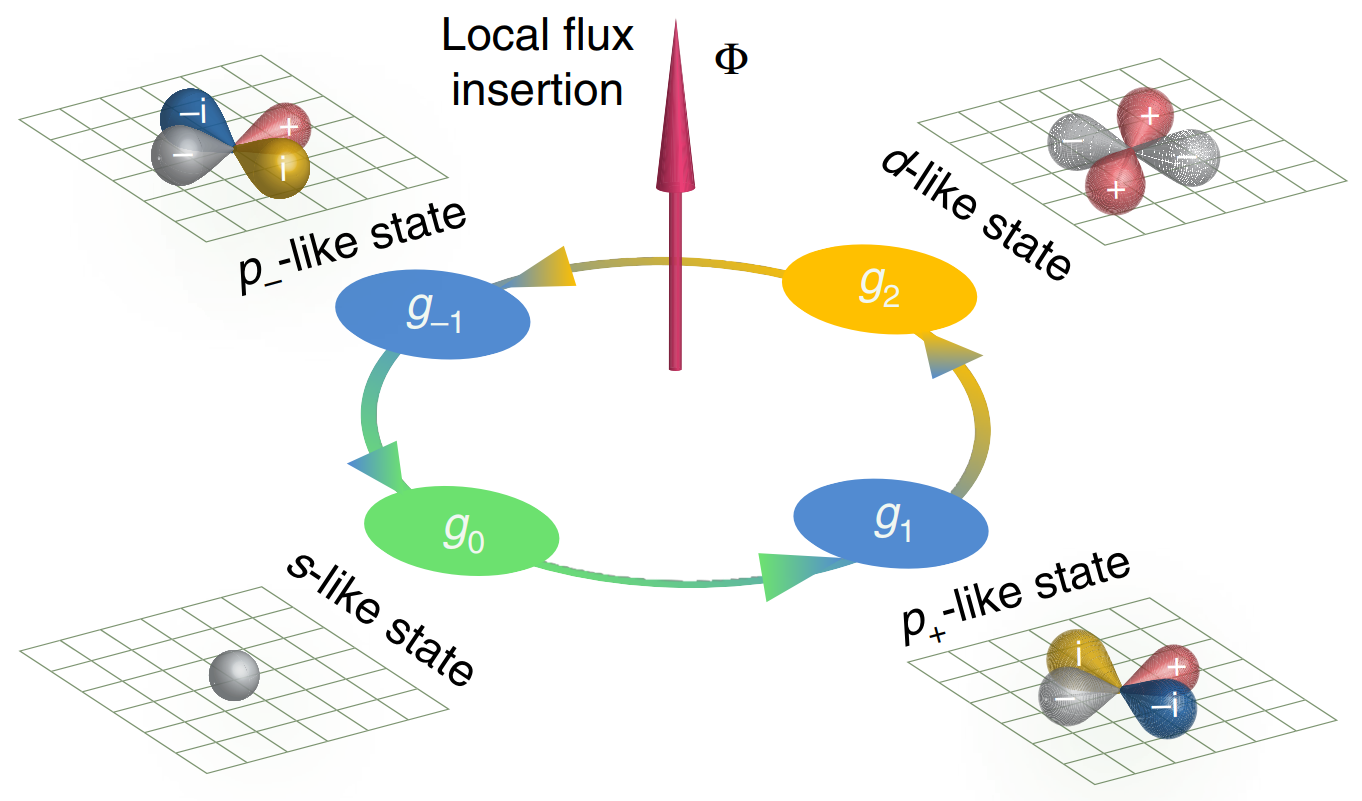Topological Wannier cycles induced by sub-unit-cell artificial gauge flux in a sonic crystal
来源: 作者: 发布时间:2022-10-14On March 22, 2022, the team of Prof. Jianhua Jiang from Soochow University, together with Prof. Feng Li from Beijing Institute of Technology and Dr. Wu Ying from South China University of Technology, published a paper entitled Tolological Wannier Cycles induced by sub-unit-cell Artificial Gauge Flux in a Sonic Crystal in Nature Materials.

Gauge fields play a major role in understanding quantum effects. For example, gauge flux insertion into single unit cells is crucial towards detecting quantum phases and controlling quantum dynamics and classical waves. However, the potential of gauge fields in topological materials studies has not been fully exploited. Here, we experimentally demonstrate artificial gauge flux insertion into a single plaquette of a sonic crystal with a gauge phase ranging from 0 to 2π. We insert the gauge flux through a three-step process of dimensional extension, engineering a screw dislocation and dimensional reduction. Additionally, the single-plaquette gauge flux leads to cyclic spectral flows across multiple bandgaps that manifest as topological boundary states on the plaquette and emerge only when the flux-carrying plaquette encloses the Wannier centres. We termed this phenomenon as the topological Wannier cycle. This work paves the way towards sub-unit-cell gauge flux, enabling future studies on synthetic gauge fields and topological materials.

Fig. 1. Schematic illustration of the procedures that realize the single-plaquette gauge flux. The blue line and arrow indicate the dislocation line and the Burgers vector, respectively. Four colours represent layers of different heights. The red circular arrow indicates the chiral structure of the system.

Fig. 2. Artificial gauge flux insertion in a single plaquette in acoustic systems.

Fig. 3. Topological Wannier cycles: underlying principles
Our study unveils a concept of topological Wannier cycles, which are manifested as cyclical spectral flows traversing the bandgaps. This phenomenon provides a powerful tool for the study of topological crystalline materials. Particularly, it gives access to the measurement of Wannier centres with sub-unit-cell spatial resolution, which is crucial for the experimental investigation of various topological phases in crystalline solids for electrons and in metamaterials for phonons and photons. This mechanism can also be applied to electronic systems, which will provide an experimental probe of a large category of topological crystalline insulators with filling anomaly that widely exist in crystalline compounds, as shown by recent works based on ab initio calculations. For acoustic systems, the discovered topological helical modes propagating along the screw dislocation can serve as robust 1D wave guiding in 3D acoustic systems. In addition, the single-plaquette gauge flux realized here is valuable in the manipulation of phonons as well as in the engineering of topological states. Here, the local gauge flux can be expressed as the inner product between the Burgers vector of the SSD and the wave vector of the system. When multiple SSDs exist in a system, they lead to multiple local gauge fluxes. By varying the Burgers vectors of the SSDs locally, pseudo-magnetic fields and other effects can be created.




